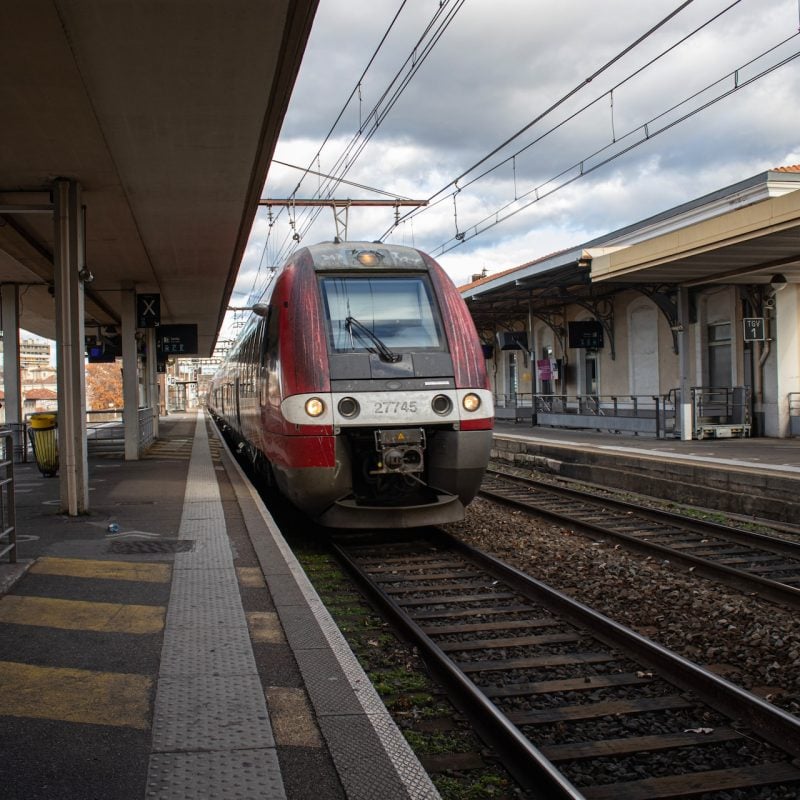Challenges in Glazing for Rail Transport Stations

Table of Contents
If you’re managing or designing a rail station, here’s something important: think about the glass you use! Glass isn’t just for looks; it’s key for keeping stations safe and not wasting energy.
On average, a well-insulated home loses 25% of its heat through its windows. Old single-glazed windows lose up to 50% more heat than newer double glazed units. However, with the increasing demand for larger, more complex designs, the challenges in glazing have become more prominent.
Various factors, from durability to thermal performance, must be considered to achieve successful high-level glass replacements. Let’s dig into the issues and figure out how to make using glass in train stations work better.
Top 5 Glazing Challenges in Rail Transport Stations
Glazing for rail transport stations poses several challenges due to such environments’ unique requirements and demands. Some of the key challenges include:
- Challenge 1: Safety and Security Concerns
Ensuring the safety and security of rail transport stations is a crucial challenge in glazing.
The glazing used in these stations must withstand various threats, such as vandalism, break-ins, and even terrorist attacks. Specialised glazing solutions like laminated or tempered glass can be used to address this challenge. These types of glazing are designed to be more resistant to impact and breakage, making it harder for intruders to gain access.
Additionally, using security films or interlayers can further enhance the strength and durability of the glazing, providing an extra layer of protection.
- Challenge 2: Energy Efficiency
Creating energy-efficient glazing systems for rail transport stations is another significant challenge.
With large glass surfaces, these stations are prone to heat gain or loss, leading to increased energy consumption for heating and cooling. Low-emissivity (low-e) coatings can be applied to the glazing to tackle this challenge. These coatings help reduce heat transfer, allowing for better insulation and improved energy efficiency.
Double or triple glazing with insulating gas fills can also be employed to enhance thermal performance and minimise energy wastage.
- Challenge 3: Noise Control
Noise control is a critical challenge regarding glazing for rail transport stations.
These stations are often located in busy urban areas, resulting in high noise levels from trains, traffic, and other sources. Sound-insulating glazing can be used to address this challenge. This type of glazing is designed to reduce noise transmission, creating a quieter and more comfortable environment inside the station.
For example, Acoustic laminated glass consists of multiple layers of glass with an acoustic interlayer that helps absorb and dampen sound waves. This helps to create a more peaceful and enjoyable experience for passengers and station staff.
- Challenge 4: Maintenance and Durability
Maintaining the glazing in rail transport stations presents a significant challenge due to the high traffic and constant exposure to environmental factors.
The glazing must be durable enough to withstand regular cleaning, weather conditions, and wear and tear from daily use. To address this challenge, self-cleaning or easy-to-clean coatings can be applied to the glazing. These coatings help to repel dirt and grime, reducing the need for frequent cleaning and maintenance.
Additionally, selecting glazing materials with high durability, such as impact-resistant glass or ceramic-based coatings, can help extend the lifespan of the glazing and minimise the need for replacements.
The Effects of Environmental Factors on Glazing for Rail Stations
Railway stations play a crucial role in transportation infrastructure, serving as points of departure and arrival for millions of passengers daily. However, it is essential to consider the effects of environmental factors on glazing to ensure its durability and functionality.
- Weather Conditions
The environmental factor that significantly impacts glazing for rail stations is weather conditions. Extreme temperatures, such as scorching heat or cold, can cause the glass to expand or contract, leading to cracks or breakage.
For example, in regions with high temperatures, like the Middle East, unique glazing solutions with solar control properties reduce heat transfer and ensure passenger comfort inside the station.
- Air Quality
Another important environmental factor is air quality. Pollutants in the air, such as industrial emissions or vehicle exhaust, can deposit on the glazing surface, affecting its transparency and appearance. This not only impairs visibility but also requires more frequent cleaning and maintenance.
To combat this issue, self-cleaning coatings are applied to glazing surfaces, which use sunlight and rainwater to break down and wash away organic pollutants.
- Wind Load
The force exerted by wind on the glazing of rail stations is a crucial consideration. High wind speeds can subject the glazing to significant pressure, potentially leading to structural failure or detachment.
To ensure the safety and durability of the glazing system, engineers employ advanced design techniques and materials that can withstand the specified wind load requirements. For example, laminated glass with polyvinyl butyral (PVB) interlayers is often used as it provides enhanced strength and resistance against wind-borne debris.
- Seismic Activity
Rail stations located in earthquake-prone areas must consider the effects of seismic activity on glazing. Earthquakes generate potent vibrations that can cause the glass to shatter or dislodge from its frame.
Glazing systems designed for seismic zones incorporate specialised framing systems, flexible sealants, and robust anchoring mechanisms to mitigate this risk. These measures help the glazing to absorb and dissipate the energy generated during an earthquake, ensuring passenger safety and minimising damage to the station.
- UV Exposure
Ultraviolet (UV) radiation from the sun can degrade the performance and appearance of glazing over time. Prolonged exposure to UV rays can cause discolouration, fading, and even weakening of the glass.
To protect against this, glazing solutions with UV-resistant coatings or laminated layers are used. These coatings or layers block a significant amount of harmful UV radiation, preserving the clarity and integrity of the glazing while also reducing the fading of interior materials, such as signage or artwork, within the rail station.
Frequently Asked Questions
What is the basic transportation problem?
The basic transportation problem refers to the challenge of efficiently moving goods or people from one location to another. It involves optimising routes, modes of transportation, and scheduling to minimise costs and maximise efficiency.
What are the greatest risks faced by the transportation industry?
The transportation industry faces several significant risks:
- Accidents and Safety: The risk of accidents can lead to injuries, property damage, legal liabilities, and reputational harm.
- Regulatory Compliance: Compliance with transportation laws, safety standards, and environmental regulations is crucial to avoid penalties and maintain a good reputation.
- Economic Volatility: Fluctuations in fuel prices, currency exchange rates, and economic conditions can impact transportation costs, profitability, and demand.
- Cybersecurity Threats: As digital systems become more prevalent, the risk of cyberattacks targeting critical infrastructure, data breaches, and service disruptions increases.
What are the risks of the transport and logistics industry?
The transport and logistics industry faces specific risks:
- Supply Chain Disruptions: Disruptions in the supply chain, such as natural disasters or labour strikes, can cause delays, increased costs, and customer dissatisfaction.
- Theft and Pilferage: The risk of theft or pilferage during transportation can result in financial losses and damage to reputation, especially for high-value or vulnerable cargo.
- Infrastructure Limitations: Inadequate or outdated infrastructure can hinder efficient operations and increase costs.
- Environmental Impact: The industry’s carbon emissions, air pollution, and noise pollution contribute to environmental concerns, potentially leading to regulatory pressures and additional costs.
Conclusion
In summary, glazing for rail transport stations poses numerous challenges, from dealing with environmental factors to ensuring safety and compliance with regulations. However, solutions are being found with technological advancements and durable materials.
Case studies have demonstrated successful glazing installations in railway stations, highlighting the potential for improvement in this area. If you want to ensure the quality and durability of your rail station glazing, consider scheduling an inspection or learning more about the process. It’s an investment that will benefit both passengers and the station itself.






